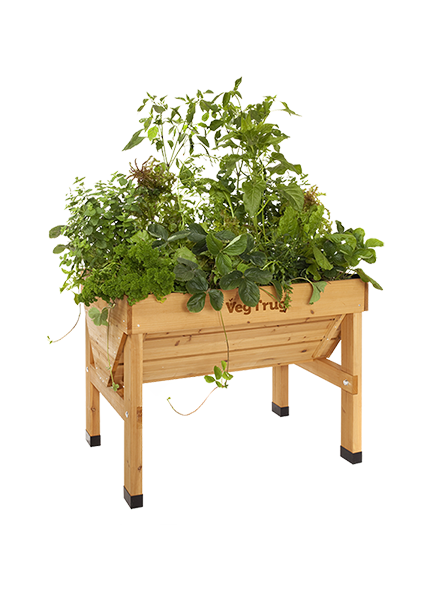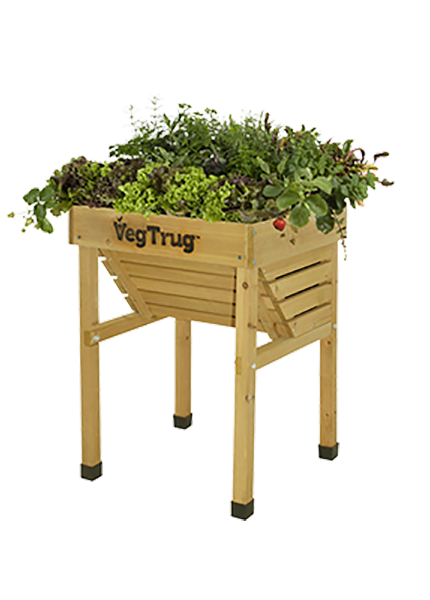Chervil is a more refined tasting relative of parsley and is used with a wide range of dishes. Its gentle aniseed flavour adds zing to salads and is a primary ingredient in Fines Herbes, one of the three standard herb mixes in French fine dining.
Chervil is a perfect addition to any VegTrug and even thrives in cool, shady areas where other plants can’t. VegTrug’s deep v-shape is perfect for the long root of chervil. In the hottest climates, grow chervil during the winter - it might not survive the hot summer temperatures. Read on for more information about how to grow chervil.
Chervil is sensitive to hot climates and thrives best in cooler climates and seasons. In the UK you should sow between March and August. In hotter climates you’ll need to sow during the winter months. If the soil is too warm, chervil won’t germinate. If you want a growing-season long harvest, sow your chervil every two to three weeks, in areas where temperatures stay above freezing and below 20°C.
Once established chervil doesn’t like to be moved either, so when you’re thinking about how to grow chervil successfully it’s ideally grown from seed in the garden or a container like a VegTrug. Chervil grows well in deep pots and containers as long as you keep the soil moist and well fed with the right nutrition. Chervil’s root is long so the container depth is important.
Sow your seeds in shallow drills, roughly 1cm deep and 30cm apart. Make sure the soil is well-drained and that you’ve got two months without frost ahead of you.
You might not see the first seedlings for around two weeks and to get the best from your plants keep them watered regularly. And as mentioned chervil thrives best in a shady spot. Extreme temperatures can cause established chervil to turn to seed.
On the subject of seed, chervil is a fruitful self-seeding plant. So, unless you want your VegTrug completely filled with Chervil you should remove some of the flower to prevent the seeds spreading too much.
Chervil can be grown in winter too, and not just in hot climates. Cover with a VegTrug cold frame in the winter.
Once the flowers appear you won’t be able to eat the leaves, so sow regularly if you want Chervil throughout the growing season.
Part of successfully understanding how to grow chervil means dealing with the possibility of pests, bugs and other problems.
Aphids, or greenfly, can be a problem for chervil growers, especially on plants grown indoors. Snails and slugs can be an issue too. To help prevent greenfly and birds getting at your precious plants and seeds there’s a helpful mesh cover available for your VegTrug.
You could spray your chervil with a soap and water mixture of two teaspoons of washing up liquid to a gallon or 4.5 litres of water. Or try a horticultural soap.
Chervil is a foundation in the herb mixes that make up classic French cooking. It’s great raw in salads too.
You should only have to wait around nine weeks before you can cut the first leaves ready for cooking. But regular cutting will encourage better growth.
Chervil delivers its best flavours when the leaves are young and once they change to a bronze or purple colour they will be too bitter.
How to grow chervil is part of the VegTrug Grower’s Guide.

